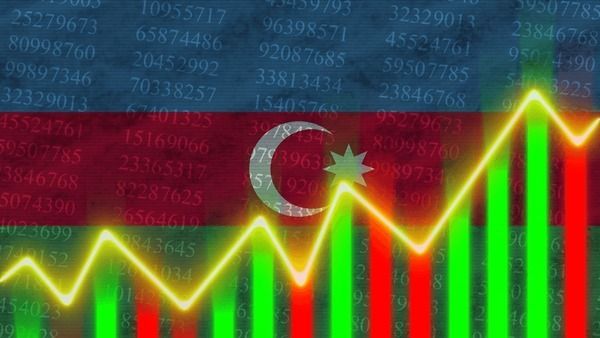ING predicts resilient non-oil sector and gradual GDP recovery for Azerbaijan

Azerbaijan is demonstrating significant progress on both economic and geopolitical fronts. This advancement has attracted the attention of major global financial institutions. Among them, the Dutch financial giant ING Group has recently published a detailed report outlining Azerbaijan’s economic outlook, offering valuable insights into the country’s growth prospects and challenges ahead.
The Dutch financial institution ING Group projects a moderate but stable growth trajectory for Azerbaijan over the next two years. While the forecasts point to a slight deceleration in economic momentum compared to 2024, the overall outlook underscores macroeconomic resilience, fiscal discipline, and positive structural trends in key non-oil sectors.
According to ING’s projections, real GDP growth in Azerbaijan is expected to reach 1.5% in 2025, recovering to 2.8% in 2026, following a robust 4.1% expansion in 2024. While the slowdown may appear pronounced at first glance, ING analysts stress that such a trend was anticipated as a natural correction after a strong rebound year.
“After 4.1 percent GDP growth in 2024, the slowdown this year was not unexpected,” the ING report notes, “but the magnitude of the slowdown exceeded previous forecasts, with pressures observed in both the oil and non-oil sectors, including transport and construction.”
Despite this temporary cooling, Azerbaijan’s nominal GDP is projected to continue its upward trajectory, increasing from $74.3 billion in 2024 to $79.6 billion in 2025, and further to $81.3 billion in 2026. This reflects sustained economic expansion, especially in a challenging global environment marked by oil price volatility and weakening external demand.
In per capita terms, GDP is expected to rise from $7,284 in 2024 to $7,631 in 2025, and $7,720 in 2026—a positive indicator of improving living standards and economic productivity.
ING’s forecast also emphasizes Azerbaijan’s relatively stable external position, even as global commodity markets remain uncertain. The country’s current account surplus is expected to moderate—from 6.3% of GDP in 2024 to 2% in 2025, eventually shifting to a 3.3% deficit by 2026. This adjustment reflects lower oil export revenues and rising import demand, particularly in the wake of large-scale infrastructure development and consumer spending growth.
A similar trend is forecasted in the trade balance, which is projected to shrink from 11.9% of GDP in 2024 to 6.3% in 2025, and down to 1.2% in 2026. However, the gradual nature of this decline highlights Azerbaijan’s ability to manage external vulnerabilities, especially as it continues to diversify away from oil and gas dependence.
Importantly, external debt levels remain low and stable, forecasted at 19.5% of GDP in 2025 and 19.7% in 2026, down slightly from 20.2% in 2024. This reflects strong debt management policies and enhances Azerbaijan’s creditworthiness on international markets.
Inflation remains within manageable bounds, even as ING predicts a modest increase in the Consumer Price Index (CPI) over the forecast horizon. CPI is expected to reach 5.1% by the end of 2025, up slightly from 4.9% in 2024, and rise to 5.8% in 2026. ING attributes this to persisting pressure in food prices, despite a slowdown in broader demand-side inflationary factors.
“The decline in mainly demand-side inflation factors allowed CPI to slow to 4.9% in August, despite food price pressures continuing after the April–May peak of 6.3%,” the report explains.
Encouragingly, the Central Bank of Azerbaijan (CBA) remains committed to price stability. The CBA expects inflation to remain below 5% in the medium term, in line with its target range of 4±2%. Its decision to cut the key policy rate by 25 basis points to 7% in July 2025 signals confidence in easing inflationary dynamics and a more stable external environment.
Outlook: Stability, diversification, and policy resilience
While external factors such as oil prices and global trade conditions continue to influence Azerbaijan’s economic indicators, ING’s report paints a picture of a resilient, strategically navigating economy.
The non-oil sectors —especially construction, transport, and services—are showing increased adaptability, despite some pressure. These sectors are expected to play a more prominent role in future growth, supported by ongoing public investment, digitalization, and regional connectivity projects like the Middle Corridor initiative.
In summary, Azerbaijan’s economic outlook remains fundamentally positive, with stable macroeconomic indicators, prudent monetary policy, and growing momentum in non-oil industries positioning the country for sustainable growth in the medium to long term.
Here we are to serve you with news right now. It does not cost much, but worth your attention.
Choose to support open, independent, quality journalism and subscribe on a monthly basis.
By subscribing to our online newspaper, you can have full digital access to all news, analysis, and much more.
You can also follow AzerNEWS on Twitter @AzerNewsAz or Facebook @AzerNewsNewspaper
Thank you!

